Board Spotlight: Darius Johnson
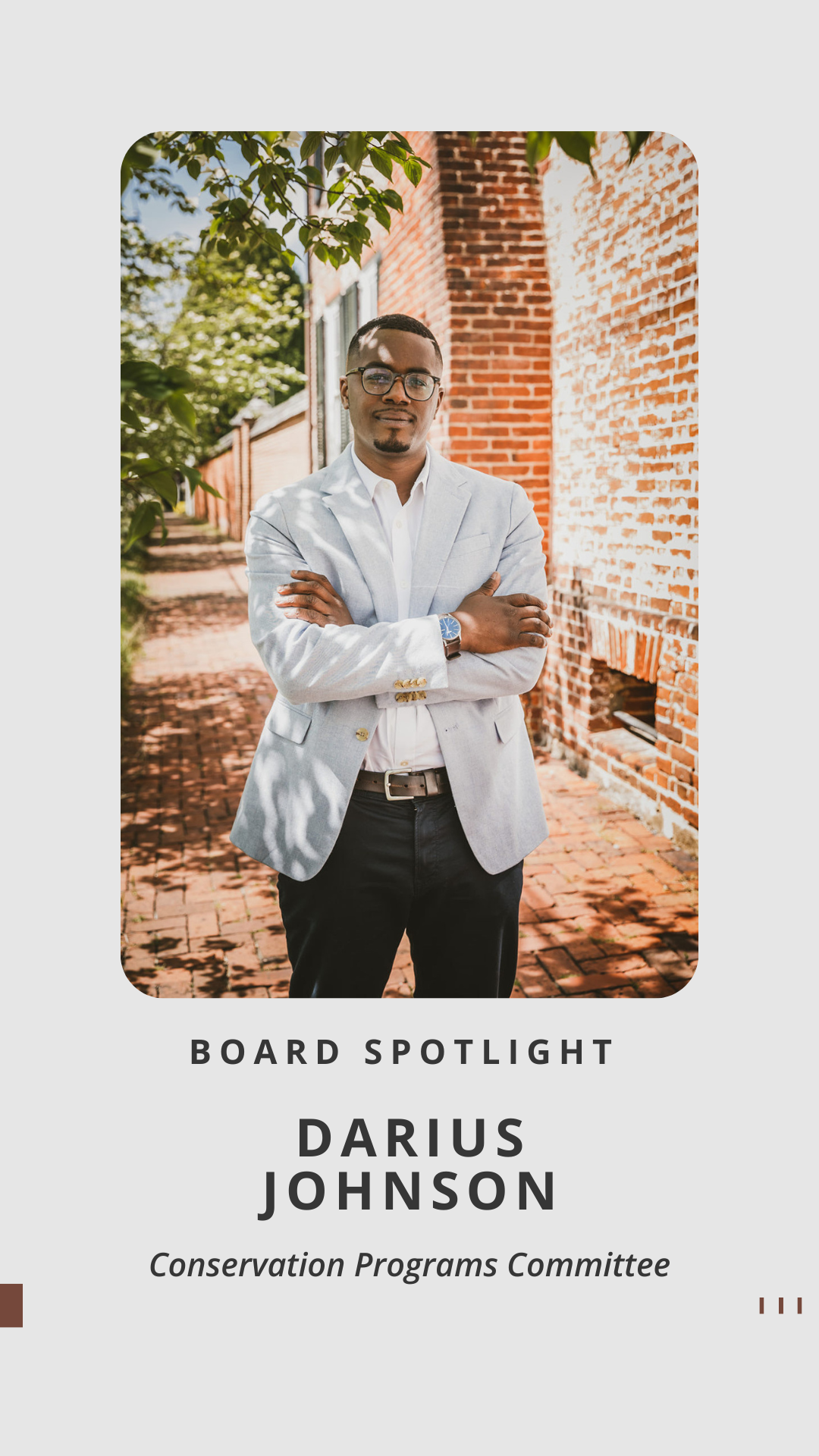
What is your favorite thing about Maryland’s Eastern Shore?
My favorite thing about the Eastern Shore is its heritage. I appreciate the hardworking and tight-knit nature of its communities. It gives me a stronger sense of self knowing that I can identify with it.
Will you share more about your background?
I’m from the Big Woods community of Kent County, Maryland. I come from a family of farmers, watermen, construction tradesmen, and domestic workers. I began working with my family’s concrete business, Johnson’s Concrete, at a young age. I went on to study Business Management at Washington College thanks to a full-tuition scholarship. I spent a year working in global business analytics before transitioning to the nonprofit sector. Since then, I’ve worked in medical fundraising, affordable housing, youth and workforce development, and conservation. I’m currently pursuing a master’s in historic preservation at Goucher College. I was blessed to be named a Built Environment and Community Engagement Scholar by Goucher, and a Mildred Colodny Diversity Scholar by the National Trust for Historic Preservation. I hope to teach college students and community members about historic preservation while consulting on projects.
How did you become involved in conservation work and how did you find ESLC?
I knew nothing about conservation until I started looking more into the Eastern Shore’s history while I was living in Baltimore County for a few years. I kept seeing ESLC’s name pop up in local development and environmental issues, and it piqued my interest. I was drawn to how ESLC’s work strategically connects conservation to how communities are developed and sustained, and how heritage is preserved. I followed ESLC’s work for a few years before becoming its community revitalization project manager in 2018. I focused on project management and community engagement in the Center for Towns, mainly working on the Packing House project and the Chestertown Heritage Trail project. I also had the opportunity to organize the Annual Planning Conference on the Bay Bridge crossing, as well as a Vacancy to Brownfields conference. I later transitioned to ESLC’s communications manager role before departing in 2021 to become executive director of Kent Attainable Housing. This year I accepted a digital justice fellowship with the Starr Center’s Chesapeake Heartland project at Washington College.
What is your favorite part of working with ESLC? What is something you wish more people knew about what we do?
My favorite part of working with ESLC is getting the opportunity to think strategically about how we sustain and strengthen the natural environment of the Eastern Shore and the sense of place that stems from those efforts. I wish more people understood how much work ESLC puts in behind the scenes. Many of the things that people love about the Shore can be attributed to the work of ESLC.
Is there a historical fact about the Eastern Shore that you wish more people knew?
I wish more people on the Eastern Shore knew that African Americans have a relationship with the land and agriculture that transcends slavery and sharecropping. I’ve recently learned that my ancestors just a few generations back owned farmland, as did other African American families. Unfortunately, that history isn’t well-known today, and the landownership of African Americans is all but nonexistent. I think that history would help more people of diverse backgrounds connect with the land and support conservation work.
If you’d like to learn more about African American agriculture on Delmarva, Darius recommends this 2018 needs assessment report, the Taking Nature Black conference, and this presentation from the 2020 TNB conference, featuring former ESLC board members Paulette Green and her partner Donna Dear.
Images below were provided by Darius Johnson and by the Starr Center‘s Chesapeake Heartland Project, an African American humanities project at Washington College. Archives may be searched digitally and are freely accessible to the public.
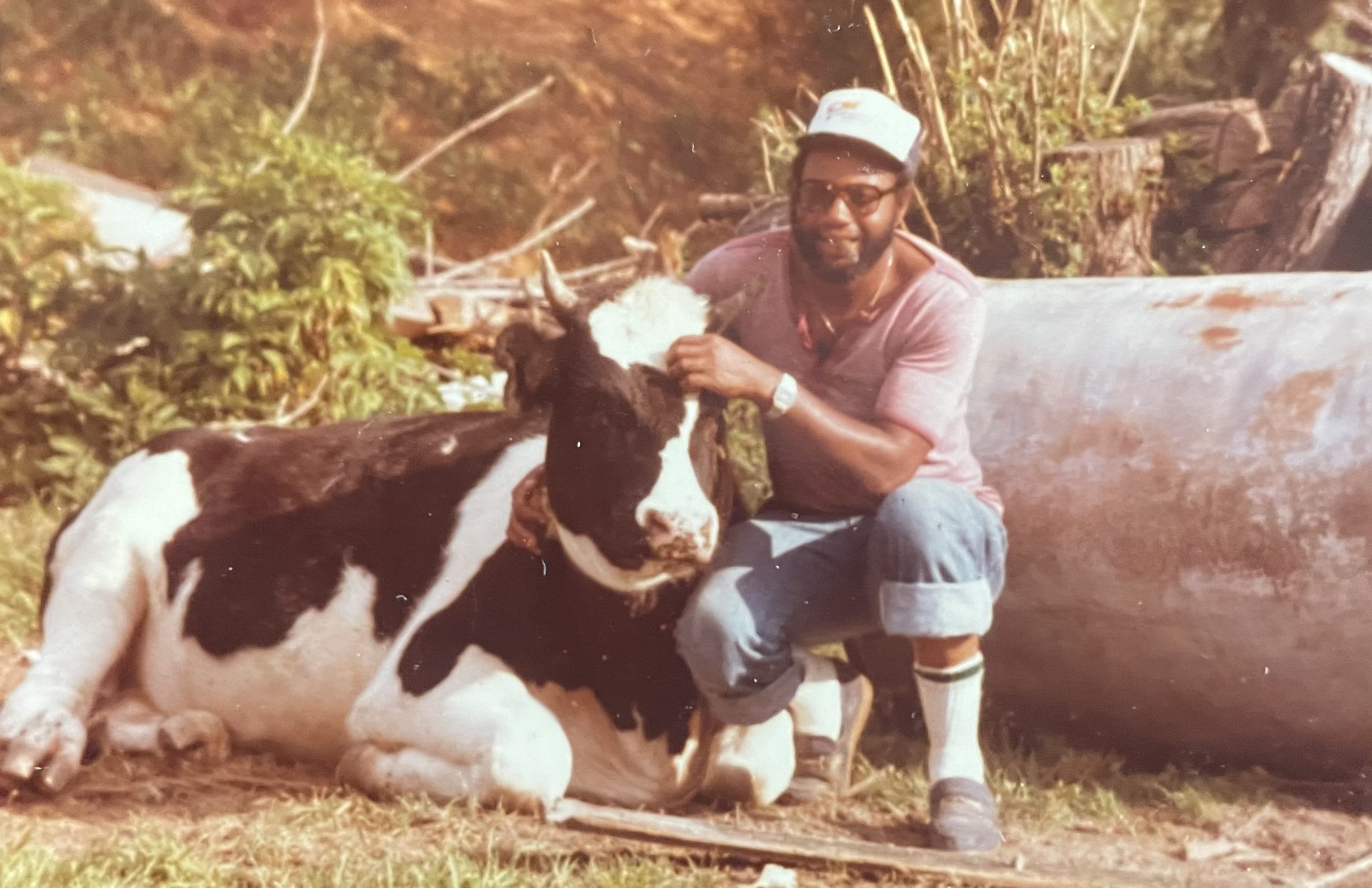
Livestock farmer Marvin Jones (Darius Johnson's grandfather) poses with one of his cows in Kent County (1970s/1980s). Image: Darius Johnson
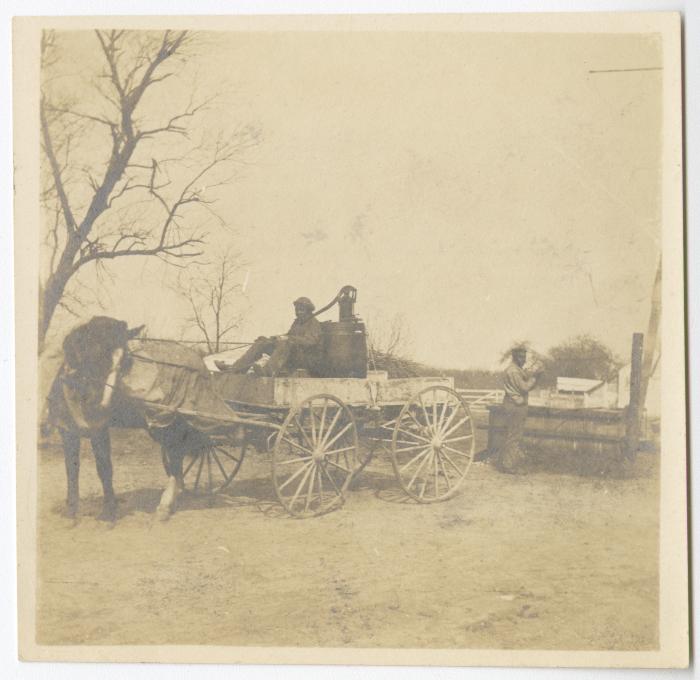
Two African American men prepare to tend an apple orchard in Kent County (1912). Image: Courtesy of Kent County Historical Society via the Chesapeake Heartland: An African American Humanities Project, Starr Center for the Study of the American Experience at Washington College.
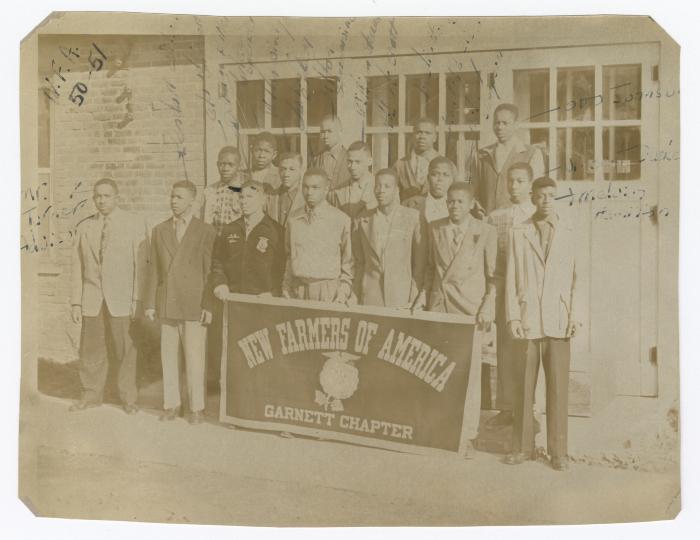
New Farmers of America, Garnett Chapter. Image: Courtesy of Tina Sparks via the Chesapeake Heartland: An African American Humanities Project, Starr Center for the Study of the American Experience at Washington College.
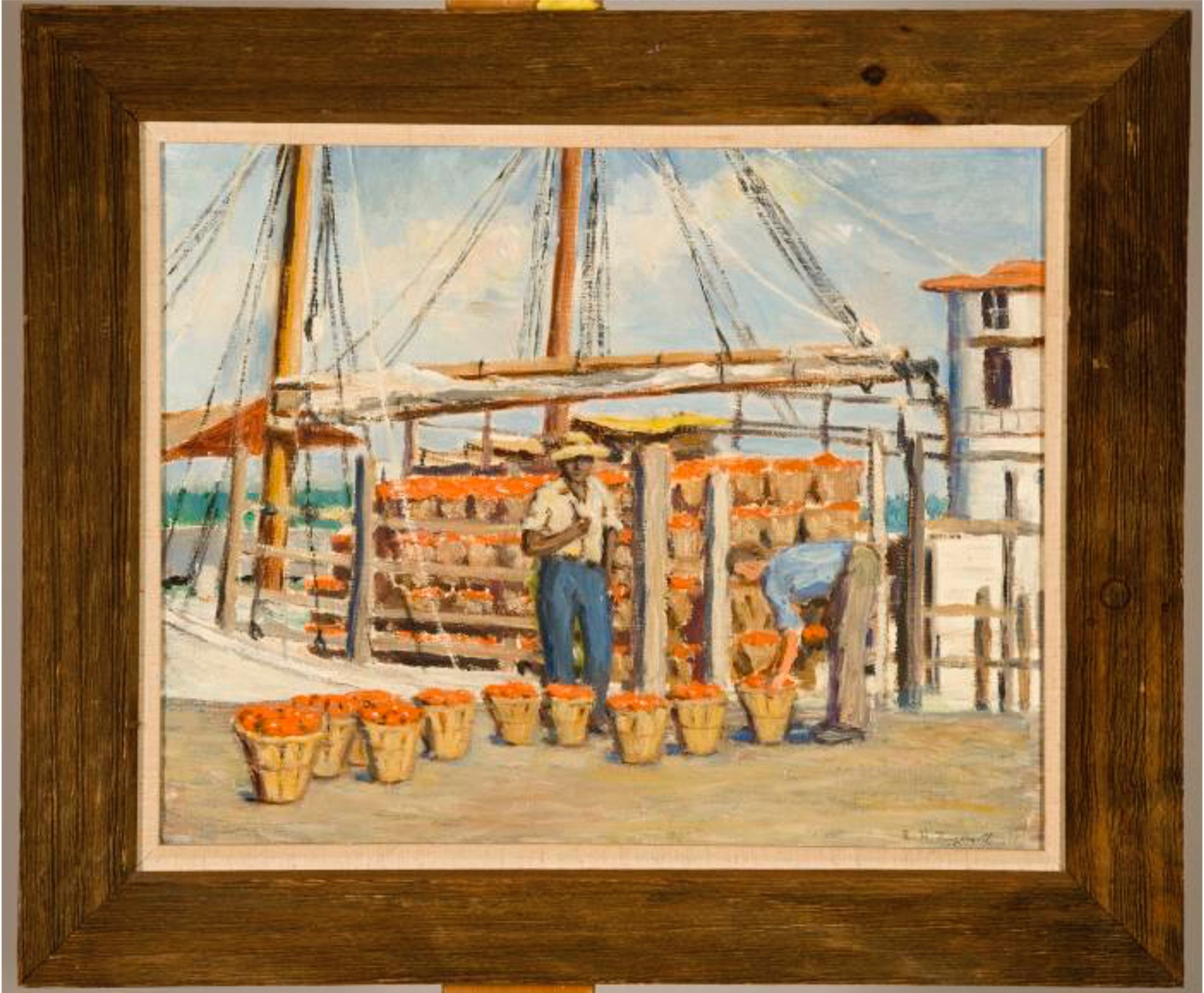
A painting by Emma Hess Ingersoll depicting a tomato boat at Quaker Neck, 1937. Courtesy of Robert Ingersoll via the Chesapeake Heartland: An African American Humanities Project, Starr Center for the Study of the American Experience at Washington College.






